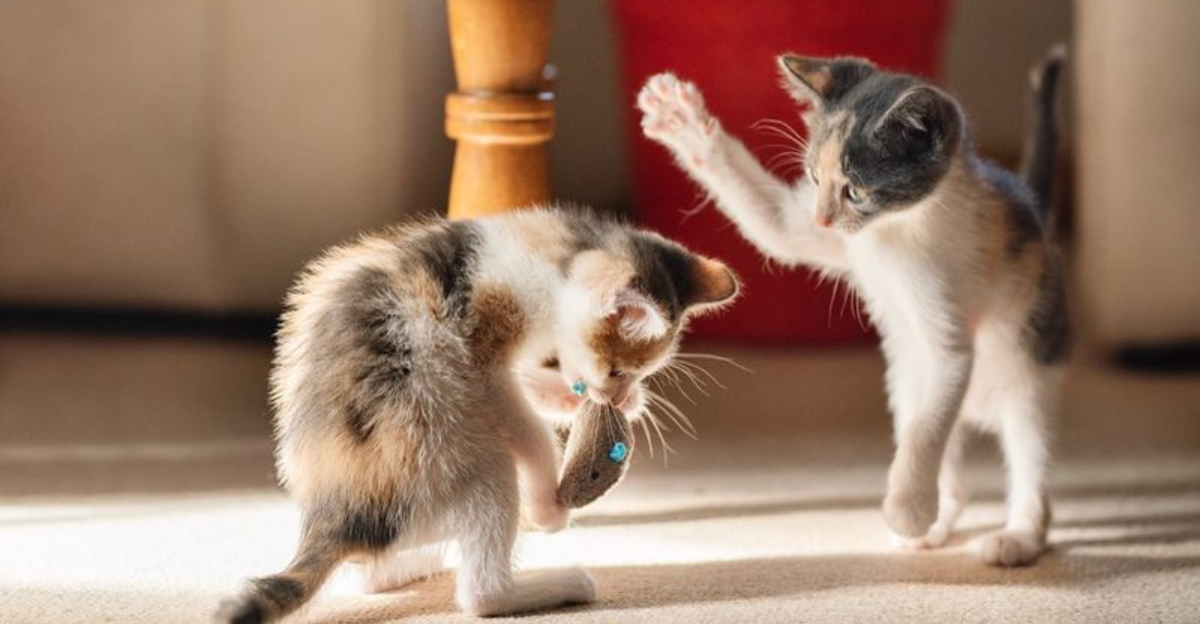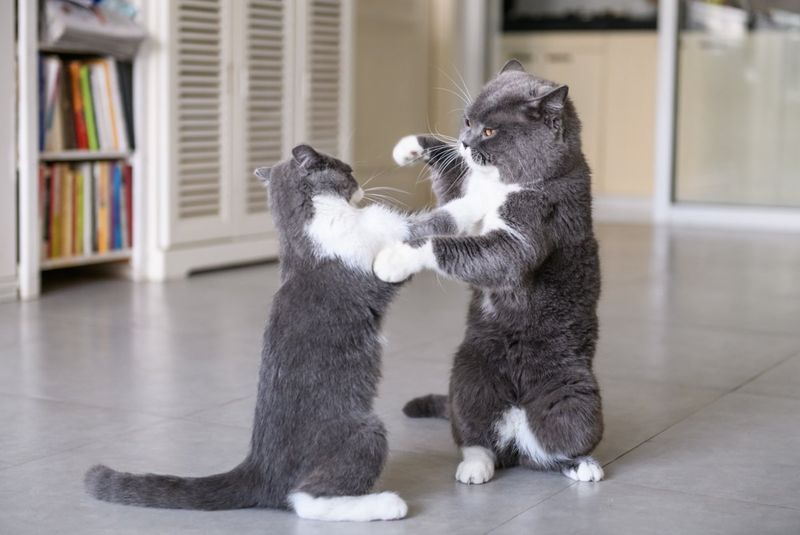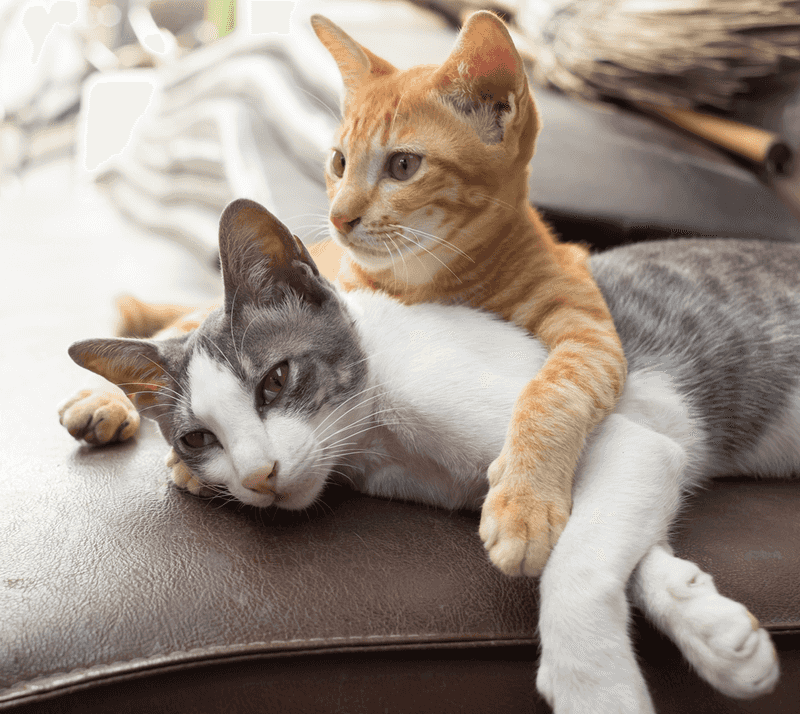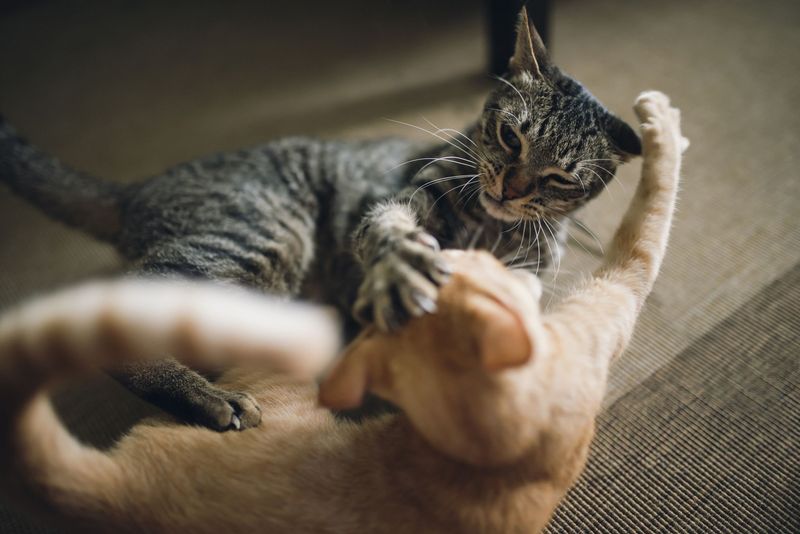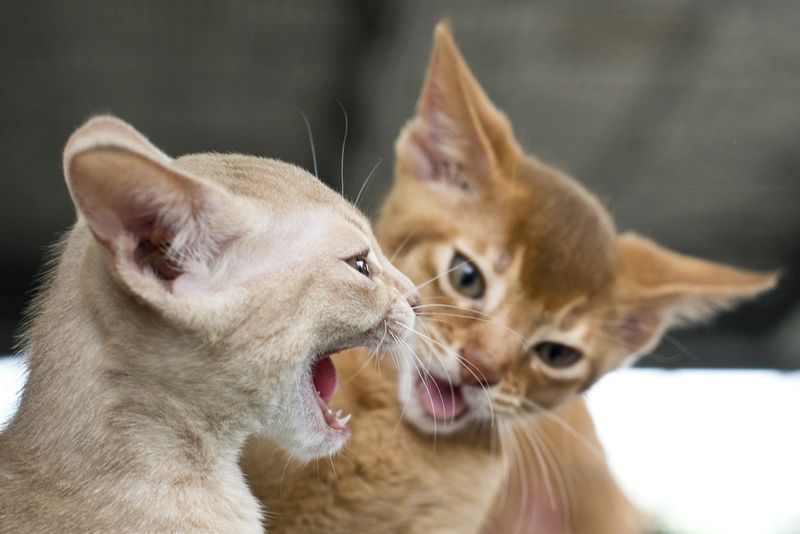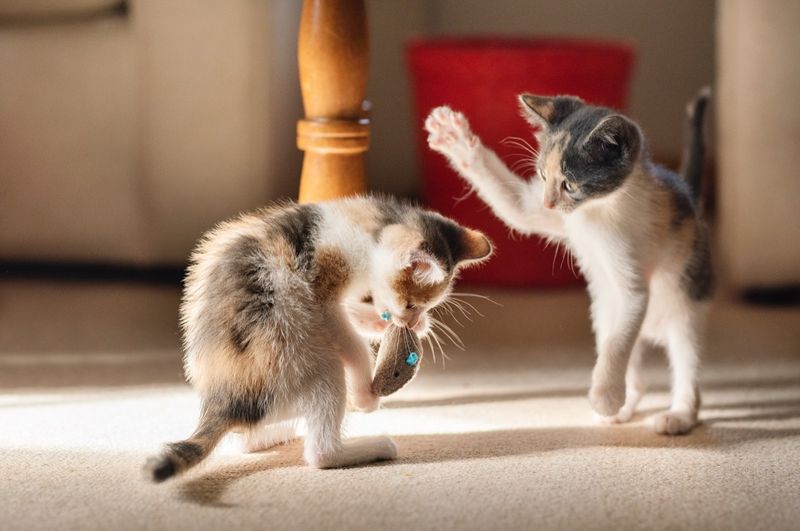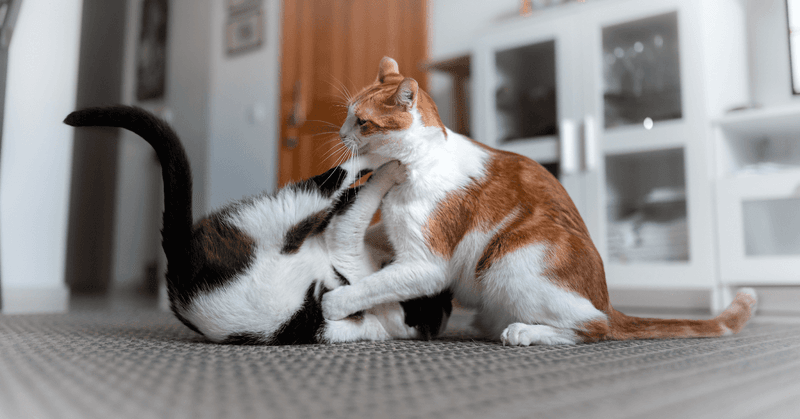📖 Table of Content:
Cats are known for their mysterious nature and playful behavior, but occasional fighting can leave owners perplexed. These seemingly peaceful creatures may engage in confrontations for a variety of reasons. Understanding why cats fight is key to preventing it and ensuring a peaceful home environment.
While some conflicts may seem random, many are rooted in instinctual behaviors and social dynamics. Territorial disputes, competition for resources, or even stress can lead to these confrontations. Identifying the cause of the fight can help in addressing the root issue and reducing future conflicts.
Creating a harmonious environment for cats involves more than just stopping fights; it’s about understanding their needs and triggers. By recognizing the underlying causes of aggression, owners can take steps to prevent fights and encourage peaceful interactions. So, let’s explore 9 common reasons why cats fight and how to resolve these issues effectively.
1. Territorial Disputes
Cats are naturally territorial animals, and territorial disputes are a common reason for feline fights. When a cat perceives its space as being encroached upon by another, it may respond with aggression to assert dominance. This behavior is instinctual, stemming from their wild ancestors who needed to protect their territory for survival.
To mitigate this, ensure each cat has its own space and resources, like separate feeding bowls and litter boxes. The gradual introduction of new cats can also help. By respecting each cat’s need for personal space, you can reduce the frequency of these altercations.
2. Lack of Socialization
Interaction plays a crucial role in a cat’s ability to engage peacefully with others. Cats not properly socialized during early life stages may struggle to coexist with other animals. They might misinterpret playful behavior as a threat, leading to fights.
To help your cat, gradually introduce them to new experiences and other pets. Use treats and positive reinforcement to build confidence. This can foster a more sociable demeanor and lessen the chances of aggressive encounters.
3. Resource Guarding
Competition for resources is another major reason cats may fight. When essentials like food, water, or toys are limited, cats can become territorial. They may show aggression to defend what they view as theirs.
To address this, provide ample resources so that each cat has access to what they need without competition. Regularly monitor their interactions and adjust resource availability as needed. Taking these steps can help reduce the need for resource guarding and the conflicts that arise from it.
4. Mating Aggression
Aggression related to mating is often seen in unneutered male cats. During mating season, they may become territorial and fight over females. This instinctive behavior can lead to intense confrontations.
Neutering male cats is one of the most effective ways to curb this form of aggression. By doing so, you not only reduce the tendency for fights but also help control the cat population. Offering a calm and distraction-free environment during mating seasons can also minimize stress and aggression.
5. Fear and Anxiety
Cats may resort to fighting when they’re overwhelmed by fear or anxiety, particularly in unfamiliar settings. When they feel threatened, they can become reactive, sparking sudden clashes.
Providing a stable, secure environment with plenty of hiding spots can help alleviate this stress. Gradual exposure to new environments and positive reinforcement can also build confidence and reduce fear-based confrontations. Ensuring a calm atmosphere is key to minimizing anxiety-induced fights among your feline companions.
6. Redirected Aggression
When a cat’s frustration can’t be directed at its intended target, like a bird outside, it may turn its aggression onto a nearby cat. This can escalate rapidly and unexpectedly.
To prevent this, identify potential external triggers and manage the cat’s access to them. Providing distractions, like toys or interactive games, can channel the cat’s energy into more positive outlets. Understanding and addressing the root cause of redirected aggression is crucial in reducing these sudden outbursts.
7. Hierarchical Conflicts
In multi-cat households, hierarchical conflicts can lead to fights. Cats often establish a pecking order, and disputes can arise when one cat challenges another’s position. These conflicts are a natural part of cat social structures but can be stressful.
Providing multiple high perches and resting areas can help alleviate these tensions by allowing each cat to claim its own territory. Observing the cats’ interactions can also provide insights into their social dynamics, enabling you to intervene and support a harmonious hierarchy.
8. Overstimulation
Cats can become overstimulated from excessive play or handling, which might lead to aggressive behavior. This is often seen when a cat’s threshold for stimulation is crossed, resulting in a sudden change in demeanor.
Understanding your cat’s limits and recognizing signs of overstimulation, such as tail lashing or ear flattening, can help prevent fights. Offering quiet time and a safe space for retreat can also be beneficial. By being attentive to your cat’s needs, you can reduce incidents of overstimulation-related aggression.
9. Pain or Illness
Health issues or injury can cause cats to act aggressively. When they’re unwell or hurting, they might react harshly to others, viewing it as a way to defend themselves while feeling exposed.
Regular veterinary check-ups are essential to catch any underlying health issues early. If you notice any sudden changes in behavior or signs of pain, seek veterinary advice promptly. Addressing health problems can significantly reduce aggression and improve your cat’s overall well-being.
